Benefits of Compression Socks: When to Wear Them & How to Use Them
Good circulation is important for our overall health. If you travel, sit or stand at work all day, or have been diagnosed with conditions such as varicose veins, DVT, CVI, or lymphedema, you may benefit from compression socks and stockings.
Compressions socks help improve circulation, fight swelling and discomfort, and promote leg health.
What are compression socks?
Compression socks are designed to support your veins and increase circulation and blood flow in your legs. They also reduce swelling and prevent blood from pooling in the legs and feet.
Compression socks and stockings are specially made, snug-fitting (yet stretchy) socks that gently squeeze the leg for immediate relief. Most compression stockings are graduated, meaning they are tighter around your ankle and get looser as they move up the garment towards the knee. This gradual support helps with circulation by improving the pumping action of calf muscles.
Compression socks and stockings come in different lengths from ankle to knee, thigh-high, and even pantyhose. They also have different levels of pressure, which is measured in mmHg (millimeters of mercury). Mild compression, with lower numbers like 15-20 mmHg is usually enough to keep you comfortable at work, while you’ll need higher numbers like 30-40 mmHg to prevent DVT. See our guide to compression levels here.
Remember, your stockings should feel snug, but not painfully tight.
Benefits of Compression Socks & Stockings
- Aids and controls leg swelling and discomfort
- Improves blood flow and increases circulation
- Improves the symptoms of various conditions
- Prevents blood clots from developing
- Prevents blood from pooling in legs
- Provides relief to fatigued muscles
- Helps speed up recovery time
- Supports veins
When should you wear compression socks?
People wear compression stockings for comfort, to do better in sports, and to help prevent serious medical conditions.
You can also use compression for circulation problems, if you’re standing or sitting all day at work, are pregnant, and more. Here are a few other reasons people wear compression socks:
- If you are at risk for or have been diagnosed with circulation problems, like DVT, varicose veins, or diabetes
- If you've just gotten surgery and it was recommended by your doctor
- If you can’t leave your bed or have a hard time moving your legs
- If you are traveling and are spending long stretches in a tight spot
- If you are an athlete looking to improve performance
How to Use Compression Socks
Compression socks should be put on first thing in the morning when you get out of bed and taken off at night. If you wait until later in the morning to put on your compression socks, your blood will already begin to pool in the lower legs, making your symptoms worse.
To find your correct size, you need to measure your legs first thing in the morning. Measure the circumference of your ankle and the circumference of your calf. Please use our size charts to locate your size for each garment.
If you need further assistance, our certified fitters are happy to help you find the right compression socks. Remember, compression socks are tight, so they can be difficult to put on and take off. Our fitters are here to advise you on how to put them on and take them off easily.
Wearing compression socks are key to leg health, along with regular exercise, healthy weight management, elevating your legs, and more. Check out some of our favorites.
Best-Selling Compression Socks at ForYourLegs.com
Mediven Assure 20-30 mmHG Knee High
FEATURES
- Maximum all-day wearing comfort
- Discreet appearance to hide blemishes
- Proven compression performance
- FIRM COMPRESSION (20-30 MMHG)
Jobst UltraSheer Women’s 8-15 mmHG Knee High
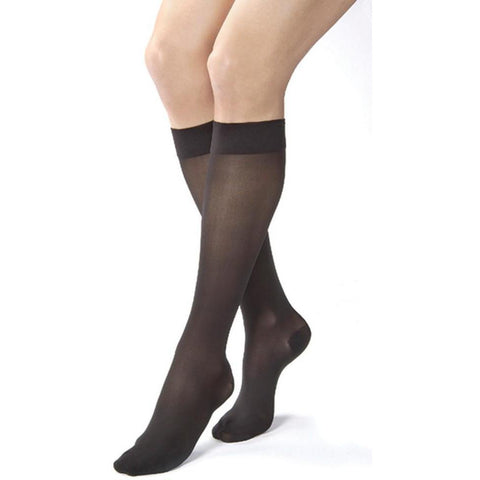
FEATURES
- JOBST Advanced Comfort wicks moisture and helps provide a cooler, comfortable wear
- Soft feel for all-day wearing comfort
- All-day comfort knee band secures fit and improves wearing comfort
- Two silicone thigh band options
- MILD COMPRESSION (8-15 MMHG)
Sigvaris Sheer Fashion Women's 15-20 mmHg Knee High
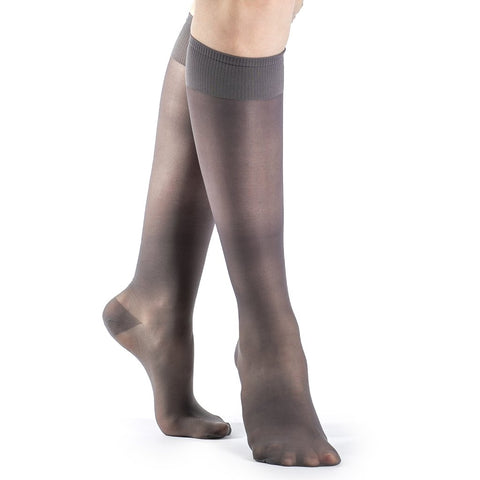
FEATURES
- Fabric feels soft against the skin
- Incredible sheer design in a variety of fashionable colors
- Sheer toe and heel area
- Comfortable stretch is excellent for everyday wear
- MODERATE COMPRESSION (15-20 MMHG)
Therafirm Core-Spun 10-15mmHg Knee High Support Socks
FEATURES
- 10-15 mmHg (the mean compression for an average ankle size)
- Ultra stretchy yarns make the sock easier to put on
- High-tech CoolMax or X-STATIC fibers wick away moisture for a dyer and more hygienic sock environment
- Comfort designed top is non-restrictive while staying in place all day
- Reinforced, comfortable heel and toe
- Black color contain X-STATIC silver fibers for moisture wicking
- LATEX-FREE fibers for soft, cool comfort
- 100% USA Made
Juzo Cotton Support 15-20 mmHg Knee High

FEATURES
- Cotton fiber
- Ribbed design for casual or dress
- Support Sock - Over-The-Counter
- Great for frequent travel, long periods of standing and walking
- MODERATE COMPRESSION (15-20 MMHG)
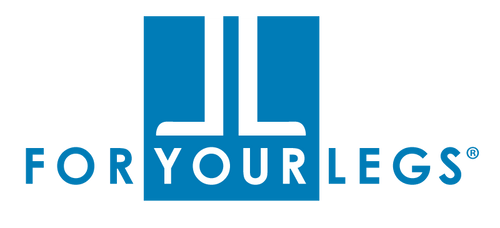

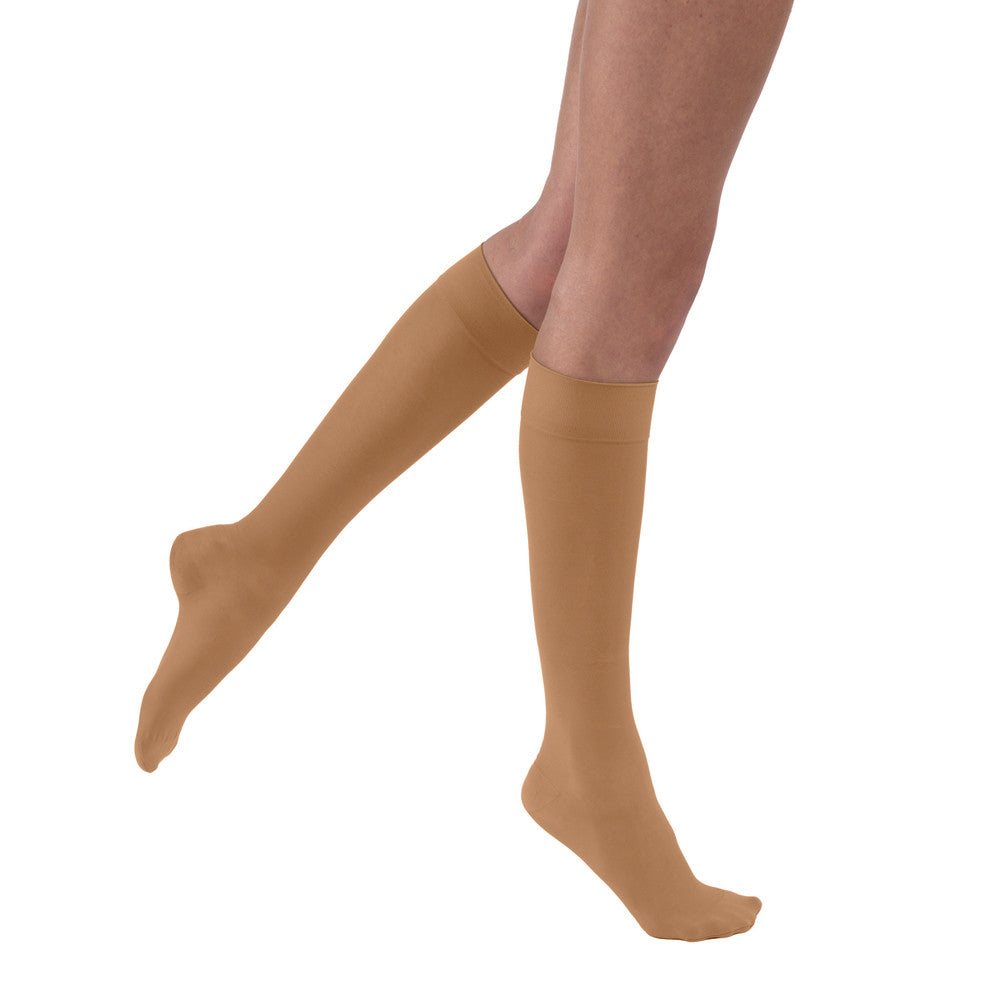
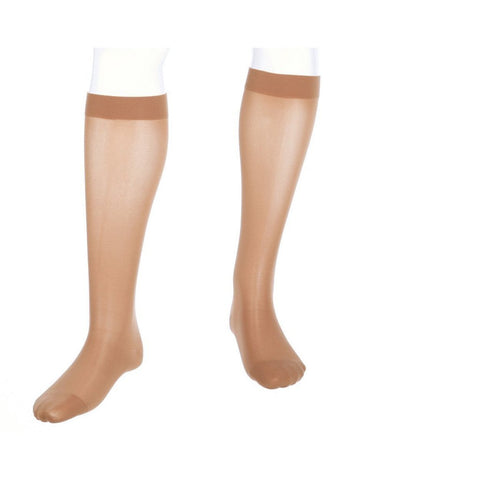

Hi John – Try looking at the men’s compression thigh highs – https://www.foryourlegs.com/collections/mens-compression-socks-stockings?=pf&pf_tstyle=Thigh%20High
I would like a long pair oh compression socks which extends to the groin. I am 5’6”
Leave a comment